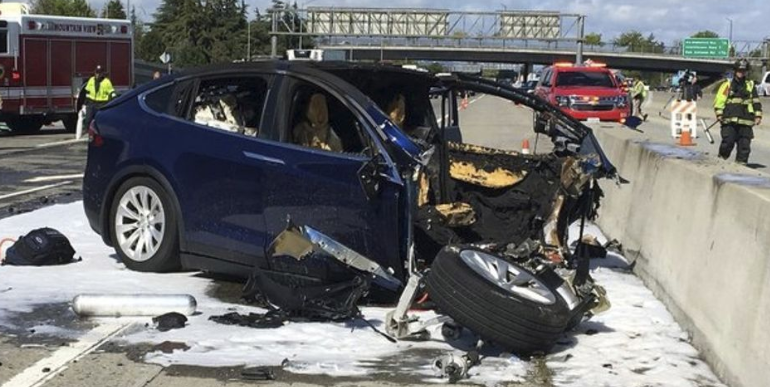One of the most unfortunate side effects of Elon Musk’s recklessness over the last few years may wind up not being his potential breaching of securities laws and defiance of the SEC, but rather the fatal deaths associated with several Tesla accidents.
As a result of one of those accidents – a fatal Model X crash that we first documented back in March of 2018 – Tesla now finds itself on the receiving end of yet another lawsuit. The family of the man who died in the accident, Walter Huang, filed a complaint April 26 that claims his “state-of-the-art” Tesla lacked safety features, such as an automatic emergency braking system, which the family pointed out was available on less expensive vehicles from other carmakers.
The family also says that Tesla knew, or should have known “that the Tesla Model X was likely to cause injury to its occupants by leaving travel lanes and striking fixed objects when used in a reasonably foreseeable manner.”
The family says that Tesla should have issued a recall or provided a warning as a result.
B. Mark Fong, a lawyer for the family, said: “Tesla is beta testing its Autopilot software on live drivers. The Huang family wants to help prevent this tragedy from happening to other drivers using Tesla vehicles or any semi-autonomous vehicles.”
The State of California Department of Transportation is also named as a defendant, raising the question of when regulators could start to be held accountable for allowing Tesla vehicles equipped with Autopilot be marketed and sold the way they are.
Driving on Highway 101 near Mountain View, California, Huang’s Model X suffered a gruesome crash when the vehicle hit a carpool lane barrier, leading two more cars to crashing into it, and causing the lithium ion batteries powering the vehicle to ignite and explode, at which point the vehicle burst into flames.
“We saw a big cloud of smoke and then all of a sudden, there was a fire ball in the air,” witness Aiden Sanchez said at the time.
Huang was then taken to Stanford hospital and tragically, the California Highway Patrol announced the day of the accident that he had died from his injuries. According to a timeline of occurrences from the day of the crash, the cause of death appeared to be that the driver was “trapped” inside the burning car.
Walter Huang’s family tells Dan Noyes he took his Tesla to the dealer, complaining that — on multiple occasions — the auto-pilot veered toward that same barrier — the one his Model X hit on Friday when he died.
This leads us to ask: When looking back on how Tesla marketed and pitched Autopilot to its potential customers, will history be kind to Elon Musk when considering the cases of people like Walter Huang and their families?
via ZeroHedge News http://bit.ly/2WltFFK Tyler Durden
